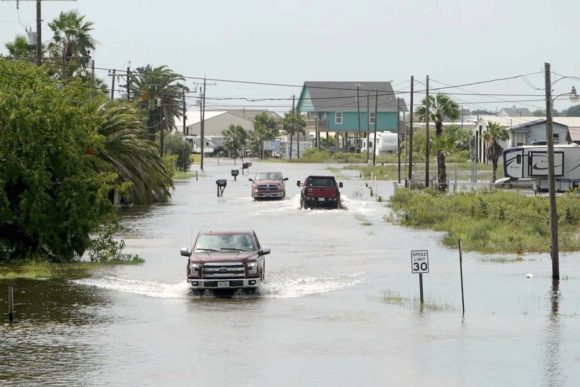Tropical Storm Imelda landed on the Texas Gulf Coast on September 17, 2019. Over the three-day duration of the storm, 43 inches of rain saturated some locations, with nearly 30 inches falling over a 12-hour period. Some areas got hit with five inches of rain per hour, meteorologically making it a 1-in-1000-year rainfall event (Gizmodo, September 19, 2019). On average, southeast Texas sees 63 inches of rain a year (New York Times, September 20, 2019).
Imelda clearly illustrates the relentless changes taking place with respect to the peril of flood. This unique storm was initially identified as a thunderstorm, and then quickly intensified into a tropical depression. Within hours of receiving that designation, the system rapidly transformed into a tropical storm, and then made landfall 15 minutes later.
Storms that reach such an intensity in nearly the blink of an eye compromise the ability to forecast, plan and communicate. Those limitations, in turn, leave property owners exposed and limit their ability to properly prepare for the event. The speed at which Imelda intensified caught many by surprise.
Imelda is the story about how we can’t know everything.
Rather than leave the fate of our homes to chance, we can heed the valuable lessons Imelda taught. While Aon Edge saw fewer claims than the NFIP, we quickly mobilized our catastrophe response team. With that team assembled and helping coordinate the dispatch of adjusters, we were better positioned to deliver critical communications to our agents, business partners and stakeholders. As a result, 61% of those claims closed in less than a month and a half after the event.
According to the Federal Emergency Management Agency (FEMA), the federal government received 10,600 flood insurance claims from Imelda, with an average claim cost of $54,000, easily a multi-million dollar event. The effects of this significant event continue to develop and efforts remain underway to assess the full insured and economic losses.
The takeaway here is we can’t foresee every risk. We can’t foresee every type of event or catastrophe. Natural catastrophes are, by definition, volatile, unpredictable and impactful.
Yet when it comes time to purchase flood insurance, we don’t think about volatility.
People don’t think about the outlier event. We only think, did the property flood yesterday? Have my neighbors ever seen a flood? When answered no, the value of insurance diminishes and people make the decision, whether intentional or not, to assume risk.
Even though the area hit by Imelda was only a few miles away from Harvey’s devastation, a stunning 79% of the homes in the six counties affected by Imelda were uninsured, according to FEMA. Slightly different geography, but same story. You have a Houston address and witnessed Harvey. Why aren’t you insured today?
For flood insurance to work for people, they need to have flood insurance.
Today, most people purchase flood insurance only when required to do so by their mortgage company. These mortgage requirements operate as a function of the flood insurance rate maps published by FEMA. Those maps excluded much of the geography flooded by Tropical Storm Imelda from the mandatory purchase of flood insurance. Solely relying on flood insurance rate maps can lead to disaster and hardship, which is why 79% of the people affected by Imelda didn’t carry flood insurance.
Recent reforms on both the federal and state level have slowly chipped away at the margins of our flood insurance program, but the gap between homes exposed to flood and those insured against flood remains large. We need to change the way we think about flood insurance in this country. Until we do, the stories of Harvey, Imelda and any of the flooding events from the last decade will repeat and families will be once again left to pick up the pieces.
Imelda, like other weather events in 2019, taught us three things:
- Weather remains unpredictable and ever changing
- We continue to see a gap between insured and exposed property
- Floods continue to disrupt lives
In order to better protect our homes and communities against the effects of extreme and unpredictable weather events like Imelda we must maximize the reach of flood insurance that works for the lifestyle of every property owner.
Photo: Sargent, Texas, Sept. 18, 2019. (Mark Mulligan/Houston Chronicle via AP)
Was this article valuable?
Here are more articles you may enjoy.



 Court Orders Justice Family Coal Companies to Pay $1M to Liberty Mutual Unit
Court Orders Justice Family Coal Companies to Pay $1M to Liberty Mutual Unit  Experian: AI Agents Could Overtake Human Error as Major Cause of Data Breaches
Experian: AI Agents Could Overtake Human Error as Major Cause of Data Breaches  Adjusters Launch ‘CarFax for Insurance Claims’ to Vet Carriers’ Damage Estimates
Adjusters Launch ‘CarFax for Insurance Claims’ to Vet Carriers’ Damage Estimates  Consumer Acceptance of Telematics Widens, Says Survey
Consumer Acceptance of Telematics Widens, Says Survey 

